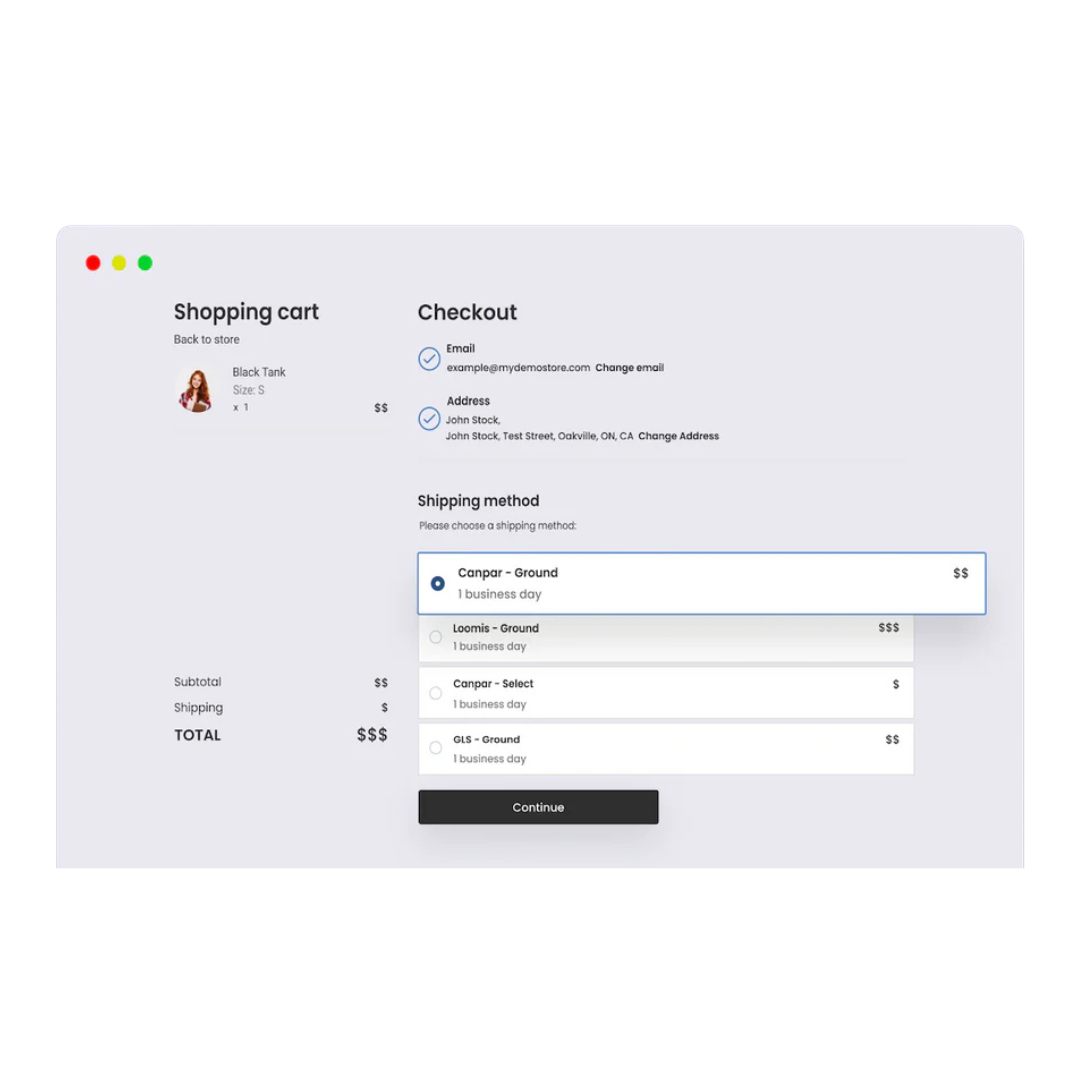Starting an eCommerce business can seem daunting. With so many moving parts, it’s hard to know where to begin. But the reality is, every successful online store shares 5 essential elements. Get these right, and you’ll be well on your way to eCommerce success.
Domain name and website with built-in SEO
Your domain name is your online identity. It’s how customers will find and remember you. Choose a domain that’s short, memorable, and relevant to your business. Avoid hyphens, numbers, or uncommon extensions.
With your domain secured, you need a well-designed website to showcase your products. But a pretty site isn’t enough – it needs to be optimized for search engines (SEO) so potential customers can actually find you. Look for an eCommerce platform with built-in SEO features like customizable metadata, sitemaps, and responsive design, and an experts marketplace.
Shopping cart integrated with payment processing
Your shopping cart is the heart of your online store. It needs to be user-friendly, supporting customers from product pages through checkout. Critically, your cart must integrate seamlessly with a payment processor to securely handle transactions.
The best eCommerce platforms have partnerships with trusted payment gateways, ensuring a frictionless (and PCI compliant) checkout process. Avoid cobbling together disparate systems that create a clunky experience for shoppers.
Efficient shipping engine with discounted rates
Unless you only sell digital goods, shipping is a major component of eCommerce. Customers today expect free and fast delivery. To meet those expectations without decimating your margins, you need a shipping solution that provides discounted carrier rates.
Top eCommerce platforms have built-in shipping engines that secure volume discounts from top national couriers. They also streamline fulfillment by auto-populating orders with customer addresses, generating shipping labels, and providing real-time tracking via branded tracking pages.
Seamless sales tax calculation and accounting
One of the biggest headaches for eCommerce entrepreneurs is dealing with sales tax. Rates and rules vary by state and even locality. Manually keeping track is a recipe for errors and audits.
The solution is an eCommerce platform that automatically calculates and collects the right amount of sales tax on every order. Even better is a system that syncs this data with your accounting software, so your books are always accurate and up-to-date.
Insightful analytics to track KPIs and guide decisions
Flying blind is not an option in eCommerce. To grow your business, you need robust analytics to track key performance indicators (KPIs). At minimum, your platform should report on traffic, conversion rate, average order value, and customer lifetime value.
But data alone is not enough – it needs to be presented in a way that enables smart decision making. Look for an eCommerce solution with customizable dashboards that surface actionable insights. Bonus points for automatic report generation and intelligent recommendations.
How Paid provides all 5 essentials in one streamlined, automated platform:
Piecing together the components above from different providers is possible. But it’s far from ideal. Disparate systems mean disparate data, convoluted troubleshooting, and countless integration headaches.
Paid is different. It’s an all-in-one eCommerce solution that provides everything you need to launch and grow an online store. That means:
- A drag-and-drop website builder with built-in SEO
- A feature-rich shopping cart with seamless payment processing
- Discounted shipping rates via an top national couriers
- Automated sales tax calculations synced with accounting
- Powerful analytics with KPI tracking and intelligent insights
The advantages of having everything unified vs. bolted together are immense. A single login provides visibility across your entire business. Data flows seamlessly between components. And if you ever need help, there’s only one number to call.
“Once you have everything in one place and you have the data together you can determine, you know, where is, you know, what are you trying to accomplish?” explains Austin Lewis, founder of Paid. “Our goal is to have small business owners be successful. In order for them to be successful they have to manage a lot. Not only what they’re selling and who they’re selling it to, but also all the expenses associated with sales. That’s where we really thrive in terms of streamlining so that you’re managing what’s coming in versus what’s going out. Paid gives you that picture of ‘Hey where do I stand?’ as a business owner.”
Guidance on getting started quickly and avoiding missing key components:
If you’re considering launching an eCommerce store, time is of the essence. Every day you delay is a day of lost sales. Fortunately, with Paid, you can be up and running in no time.
“The core components that we look at are basically outside of registered as a business and having a domain name or the website itself, the shopping cart, payment component, shipping component and the tax and accounting component,” says Lewis. “So you can report against what you’re transacting.”
By providing all of these elements in one cohesive platform, Paid eliminates the risk of missing a key piece of the eCommerce puzzle. You don’t need to be a tech expert to connect the dots – it’s all done for you.
Lewis provides an example of how this works in practice: “You can set up your shopping cart environment where you have products that are available shipping component will be automatically configured so that it will allow your customers to select whichever shipping item they want. That entire detail, whether it’s the product, the inventory, where it’s located, where it’s going will be deducted from your inventory. The shipping will be calculated appropriately so that it’s a competitive rate and you don’t lose money at the same time. And then all of the sales tax and information associated with that transaction will go into your accounting package.”
The bottom line? With Paid, you can focus on what matters most – growing your business. The platform automates the administrative complexity of running an online store so you can devote your energy to delighting customers and making sales.
As you embark on your eCommerce journey, remember the five core components every online business needs: a domain and SEO-ready website, integrated shopping cart and payments, discounted shipping, automated sales tax and accounting, and insightful analytics. With Paid, you get all of this and more in one streamlined dashboard. So what are you waiting for?
Start building your eCommerce empire today and get Paid.


































